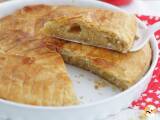8 common mistakes when making a Roscón de Reyes brioche and how to avoid them

It's January 6th, the Three Wise Men have already passed through the house and we have opened the presents, the aroma of a freshly baked roscón invades the house. It's cold outside, but it doesn't matter. With a cup of hot chocolate in your hands, you cut the first piece of the roscón: the dough is tender, light and fluffy. This is what we expect when we decide to make our first Roscón de Reyes. But what happens when the result is not what we expected? From hard dough, buns that do not rise, to candied fruits that sink. There are small mistakes that can lead us to a big "disaster"; however, the good news is that they can be easily solved if you know how. Today we tell you about the most common mistakes we make when baking a Roscón de Reyes brioche and how to avoid them to achieve a successful result.
1. Not respecting fermentation times
The roscón, like the brioche or panettone, is a pastry made with a lot of butter and a lot of sugar, so it requires a long fermentation. The yeast needs time to work its magic. Don't make the mistake of rushing and reducing the rising times or you will end up with a dense, caked doughnut. Give the dough time to double in volume (about 2-3 hours for the first rising and at least 1 hour for the second) and make sure it ferments, covered with a clean, dry kitchen towel, in a warm, but not hot, place. The key here: organization and patience.
2. Using the wrong ingredients or using the wrong ones
A good roscón brioche is made with quality ingredients. Do not skimp on this. Use fresh eggs, quality butter, good orange blossom water (no synthetic flavorings), etc.
- Flour: Strong flour is the key. If you use normal flour or weak flour, the dough will not develop the necessary gluten to support the structure of the roscón brioche. Opt for a flour with at least 12% protein.
- Milk: It is better to use whole milk.
- Butter: It must be at room temperature. Do not use melted butter or butter just out of the refrigerator.
- Yeast: In these sourdough rolls, the baking powder does not work. You will have to use either dried yeast or fresh yeast. Consult the quantities and type in your recipe.
- Liquids: Rum, orange blossom water, etc. Although the roscón brioche needs moisture to be spongy, if you overdo it with liquids you could end up with a sticky dough that is difficult to work with. Follow the exact proportions indicated in the recipe and add the liquids little by little.
3. Not kneading enough
Kneading is not just mixing the ingredients; it is developing the gluten. If you don't knead enough, you will have a fragile dough that will break when rising. The better the kneading, the better the result. Do not stop kneading until you get a smooth, elastic dough that passes the membrane test.
You can knead by hand although it is quite laborious as it requires some skill and patience, since the dough is extremely sticky. The solution is to continue kneading until the dough is no longer sticky. It is therefore advisable to use the Thermomix, Kitchenaid or other food processors.
4. Excess or lack of yeast
Many times we make the mistake of thinking that if we add more yeast we will get more leavening and therefore we will have a fluffier bun. But this is not the case. Too much yeast leaves an unpleasant taste and causes an uncontrolled leavening that collapses when baking.
Always respect the quantities indicated in the recipe. Baking is a whimsical science in which there is no room for improvisation.
5. Not controlling the oven temperature
Always preheat the oven before baking your roscón. Although each oven is different, a temperature between 350°F/180ºC - 370°F/190ºC is usually ideal. Bake with natural convection mode and without air.
If you see that the roscón begins to brown excessively, you can lower the temperature by 40°F/5°C or cover with a sheet of aluminum foil so that the bun continues to bake without receiving direct heat.
6. Decorating too early
If you place the candied fruit, slivered almonds or moistened sugar before the second rising, you run the risk of the dough sinking. It is best to do this just before baking.
Another common mistake, related to decoration, is to overdo it with the ingredients. Be prudent. An excess of weight (although it may seem a minor detail) can be the cause of your dough not rising as it should.
7. Do not give it a post-baking rest
Taking the roscón out of the oven and cutting it immediately is a bad idea. Let it cool on a rack so that it does not get wet at the base and retains its texture.
8. Poorly balanced filling
A whipped cream filling that is too runny or a poorly distributed marzipan can ruin the experience. Use well whipped cream or a firm filling that will stay in place.
Time to cook our own roscón
Here we leave you the full recipe of our Roscón de Reyes brioche so that you don't miss any detail. With it and the previous tips, you will surely get a roscón worthy of a pastry shop.





Comments